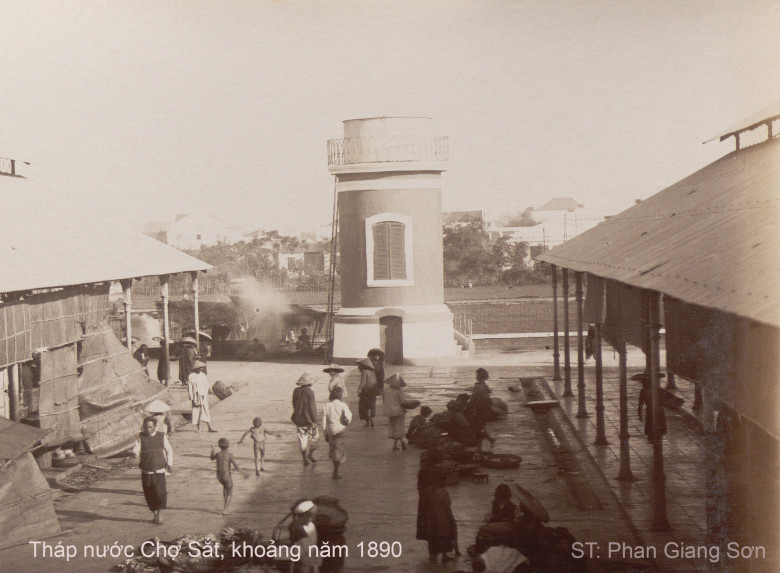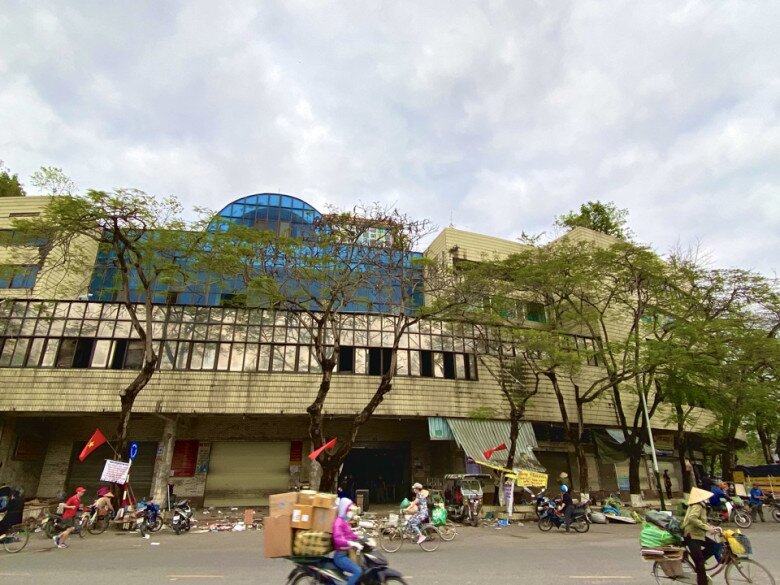Chợ Sắt, once a bustling marketplace located along the favorable water route from Hai Phong to other provinces, thrived under French rule. It served as a major trading hub for goods traveling up from Nam Dinh or down from Quang Yen, with a reputation rivaling that of Dong Xuan Market in Hanoi, Cho Rong in Nam Dinh, Cho Dong Ba in Hue, and Cho Ben Thanh in Saigon.

During the subsidy period, Chợ Sắt was rebuilt to commemorate the 30th anniversary of Hai Phong’s liberation in 1985. The central water tower was demolished, and the market expanded beyond its traditional trade of betel nuts and fabrics to include gold, silver, and a diverse array of goods. Traders in Chợ Sắt were considered among the wealthiest and most successful in Hai Phong. Visitors to the city made it a point to stroll through the market, even if just to feast their eyes on the array of offerings. Chợ Sắt became a source of pride and a symbol of the city’s prosperity.
However, a fire in 1985, coupled with the impact of new economic policies, led to a shift. The idea of investing in a new Chợ Sắt attracted investors from China. In 1992, a $15 million project by Hai Thanh Joint Venture Company was licensed by the state. The old market was demolished, and a new venture was built, featuring 2,000 stalls with a total area of nearly 40,000 square meters within a 13,000-square-meter compound.

After two years of construction, the first phase, consisting of half of a six-story building spanning 5,000 square meters, was inaugurated. This event was of utmost interest to the financially powerful traders of Hai Phong. According to a local business owner, securing a kiosk in the new market required substantial sums, with average costs ranging from 50 to 60 million VND, excluding additional fees for middlemen. Despite the exorbitant prices, local traders were eager to invest, as operating a business in Chợ Sắt was synonymous with lucrative returns.
During its heyday, each trader could earn several “chi” in profits daily. Many recouped their investment in less than a year. However, after renovations, the market’s glory days seemed to fade. Traders began to relocate to surrounding streets like Quang Trung, Ly Thuong Kiet, and Hoang Ngan.

The number of registered businesses dwindled from 1,000 to just over 300, leaving the second and third floors abandoned and later converted into storage space. Over time, the once-bustling market fell into a state of desolation.
Today, only a handful of electronics stores remain in operation, with sparse foot traffic. Even the shops at the front of the market attract only a handful of customers.
Years of neglect have taken a toll on the market’s infrastructure, with crumbling walls, peeling plaster, and ceiling cracks exposing the building’s interior to the elements. There are currently plans to redevelop the site into a mixed-use complex, including a commercial center, entertainment area, five-star hotel, and office space. This proposal has been well-received by the community, recognizing the potential for revitalizing this central location in the port city.

Chợ Sắt has now been completely cleared to make way for the new commercial center project.
While there is excitement about the future development, there is also a sense of nostalgia for what Chợ Sắt once represented—a thriving hub and a source of pride for the people of Hai Phong.
The Patience to Savour Stir-Fry Clam Soup – A Haiphong Delicacy
The coastal city of Haiphong is renowned for its delicious crab-based dishes, including the famous crab noodle soup and crab spring rolls. But there’s another local specialty that deserves attention: Stir-fried Sea Crab. In this article, we’ll dive into the unique flavors and traditions of this mouthwatering delicacy.






































